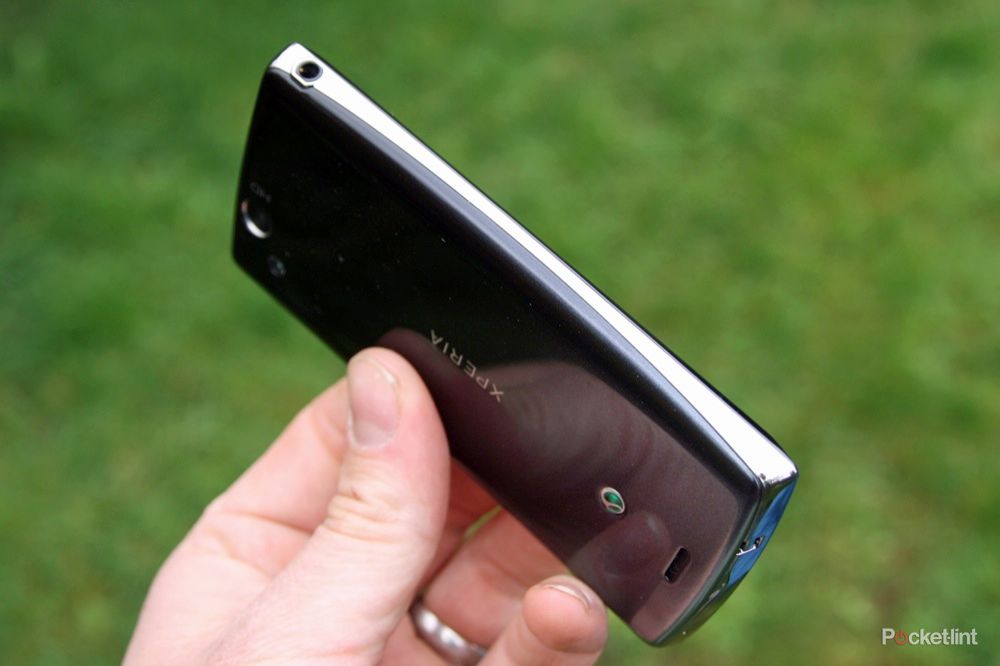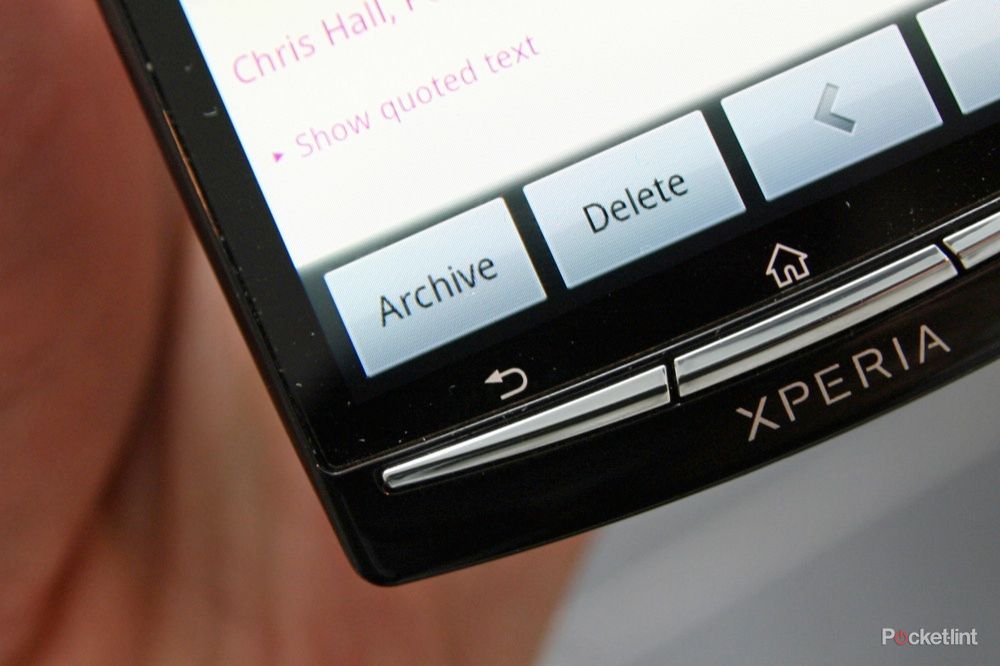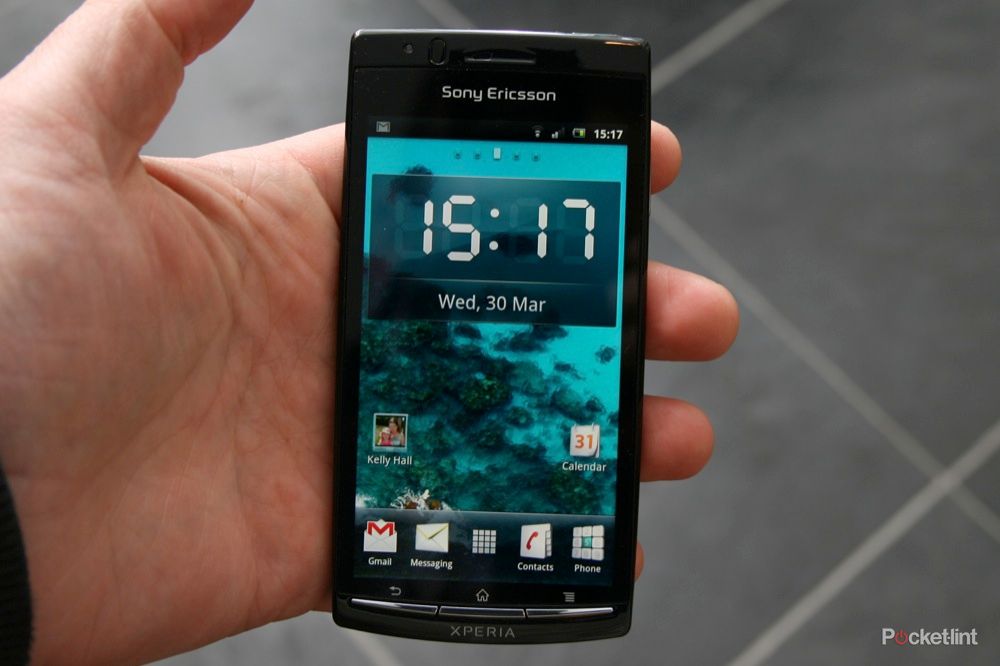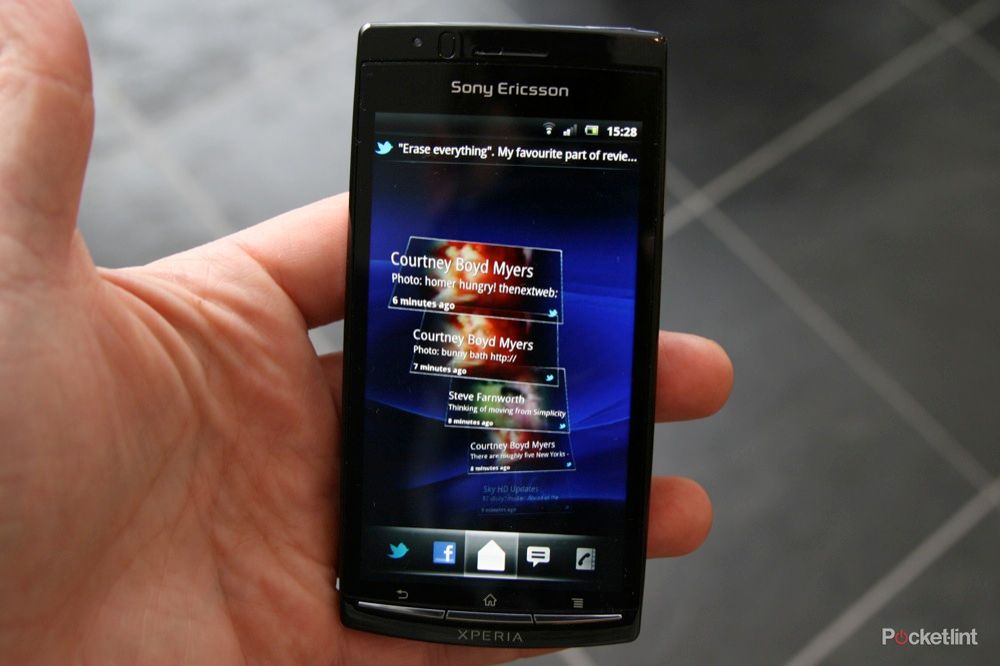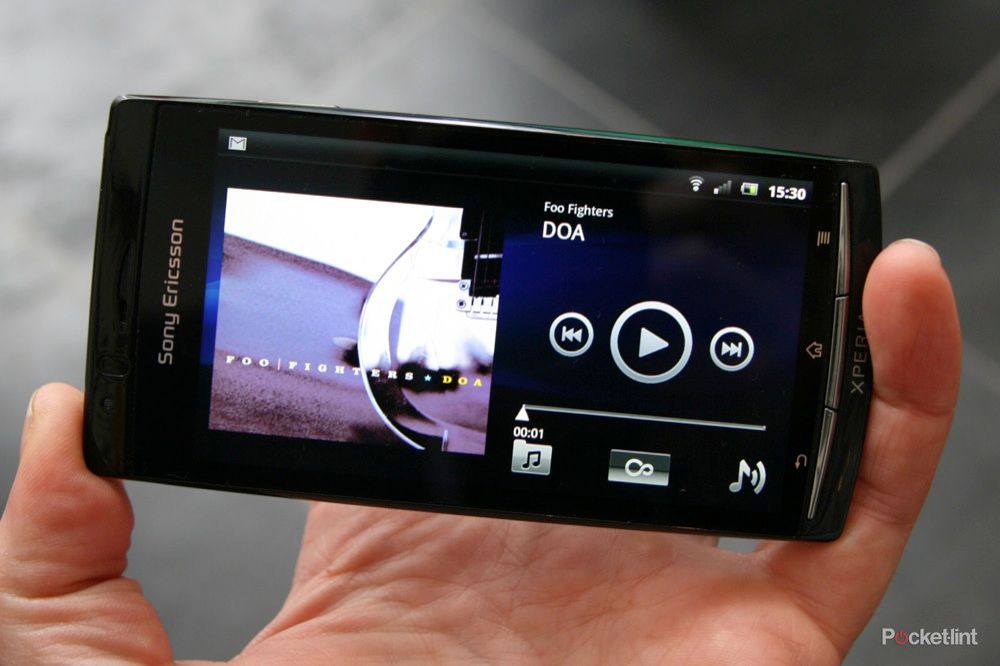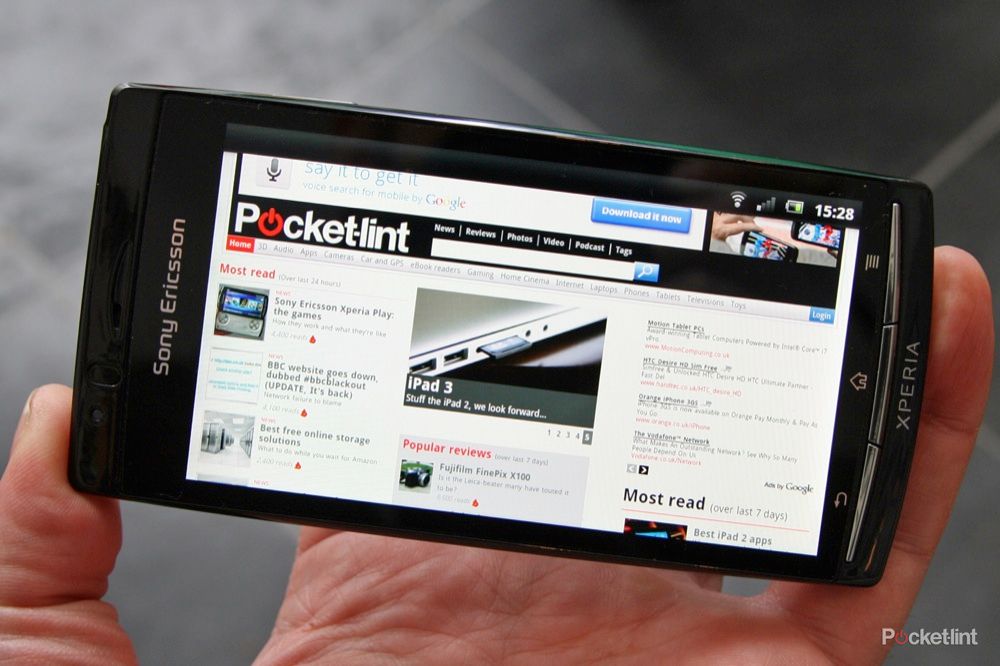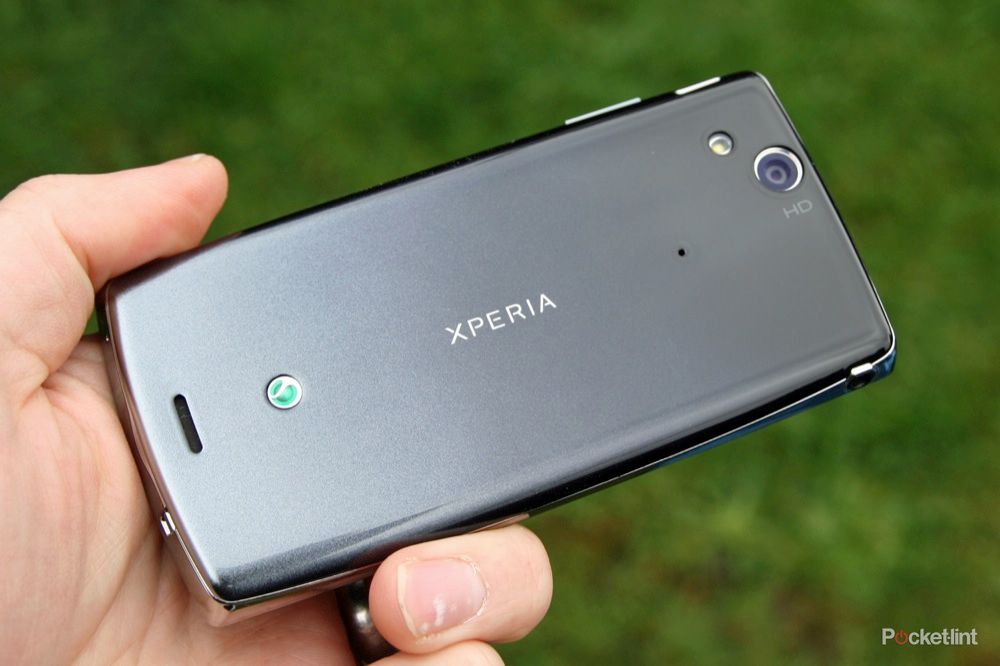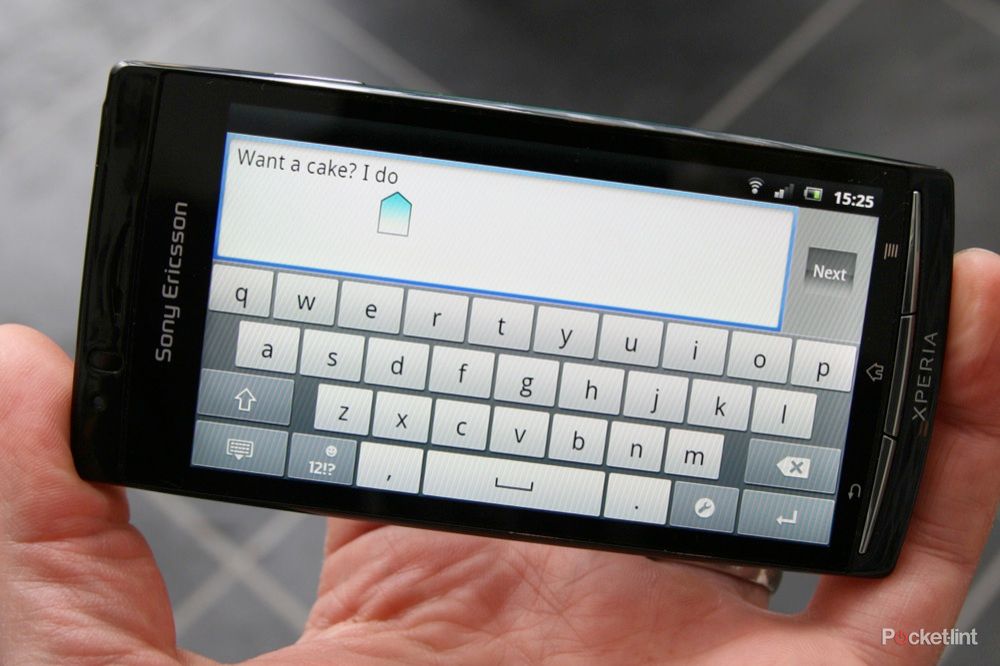The Sony Ericsson Xperia Arc is a flagship handset from a company that was on the back foot in 2010. It brings with it a wave of exciting technologies - the Exmor R sensor, the Mobile Bravia Engine - it hits the right numbers too - 4.2 inches, Android 2.3.2, 8.1 megapixels, 8.7mm. It’s an overt design expression, a reaction to the criticism of the Xperia X10, which was fat, sluggish and out-dated. We fell for it when it was announced at CES 2011, but was that just an impulsive marriage at the Chapel O’ Love, or does that relationship have a future?
Our quick take
So where does that leave the Sony Ericsson Xperia Arc? It’s leagues ahead of the Xperia X10, there is no question about that. But there is also a feeling that an upgrade to the software would make it into a fantastic phone, rather than one that is just good.
There are little issues in a number of areas that knock the Xperia Arc down from the top of the pile. The advantage it has is that software updates could make this phone better: improve the music player, add some functionality to the drop down bar, give the camera the chance it deserves. The design foibles, like the back key placement we can live with, and Sony Ericsson’s tinkering with the Gingerbread variety Android that the phone ships we think is acceptable too.
Returning to our opening analogy of the fling in Las Vegas, we come to that question of whether we think our relationship with the Xperia Arc will last. The answer is yes. Relationships are built on compromise and there is plenty you can do to make this model better - a dab of the Android Market here and there and it’s a more positive experience overall. And we still love the looks. It might be plastic, but it is sexy, and that goes a long way.
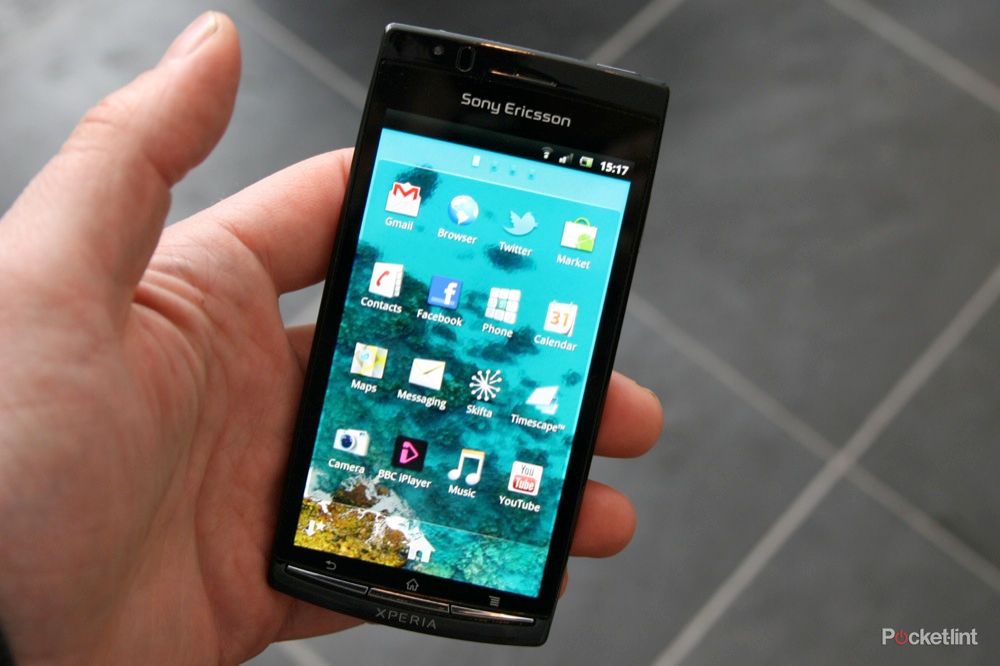
Sony Ericsson Xperia Arc - 4.0 / 5
| FOR | AGAINST |
|---|---|
|
|
The Sony Ericsson Xperia Arc is dramatic in its design. The namesake arc sees the phone slim down to 8.7mm at the thinnest point, but it’s not fat at any point. It measures 125 x 63 x 8.7mm according to Sony Ericsson, packing a 4.2-inch display into this frame. The bezel to the sides is kept to the minimum, but if anything, the Xperia Arc appears a little long.
Below the screen are the three buttons we commonly find on Sony Ericsson’s Android handsets - back, home, menu - that sit in a thin arced line. Above the screen things look a little messy, the speaker and surrounding sensors (light and proximity, we guess) look a little hastily placed. Just look at the slick lines of the HTC Desire S and you’ll see why we say this.
Running around the sides, a chrome strip adds detailing, and like the belt on a buxom model’s dress, emphasizes the curve of the body. The Xperia Arc weighs 117g, which is incredibly lightweight and that comes down to the use of plastics. Whilst HTC are rolling out precision machined aluminium framed phones, using plastic for the Xperia Arc will have it’s critics, as was the case for 2010’s Samsung Galaxy S. In fact, holding the Xperia Arc, we’re reminded of the Galaxy S in many ways and that is no bad thing as Samsung’s phone proved to be hugely popular.
Of course the large plastic back might be the biggest complaint although throughout the phone is free from flex. The glossy finish, although well disguised with the gradient of the sparkly finish, does find itself liberally smeared in fingerprints, but overall we’re still quite taken with the design. It’s certainly more striking and original than some notable rivals.
The design isn’t without it’s flaws however and we almost feel guilty for picking out such minor points. But this is the state of smartphones at the moment, where every detail counts. The three control buttons across the bottom of the device we can accept - we’d rather that SE had included a search, like they did on the Xperia Play - but the back button caused us a few problems. Because of the close proximity to the bottom of the screen, we found ourselves hitting on-screen buttons. Critically we found this a problem in Gmail, where we were constantly hitting the Archive button, and sometimes the delete button. Both actions can be undone, but if you’re a bit Gmail user, this will take some getting used to.
We also found the proximity sensor to be a little dubious in operation, sometimes shutting off the screen and sometimes not. We suspect this is partly down to its location to one side of the ear speaker, but it also seems much more reliable on the right ear than on the left - left handers take note - you might find yourself navigating your phone with your ear during a call.
We found the call quality to be fine, although when we questioned callers about background noise - which should be supressed by the second mic toggled in the Call Settings menu - they reported that they could still hear cars passing and the crunch of the gravel underfoot. We also found that the top of the phone could get a little hot, which also happens when you task it with playing movies and other demanding operations, although the design is comfortable against the ear.
Power the Sony Ericsson Xperia Arc on and you are greeted with a customised take on Android 2.3.2. Yes, Sony Ericsson are well up to date with their version of Android on this occasion and that’s a welcome measure, although the majority of phones released in 2011 recognise that Android customers care about which version of the mobile OS they get.
Sony Ericsson’s customisations aren’t as redefining as HTC’s Sense, which seems to encroach on every aspect of your mobile life and in a way, again, we find the Arc sitting a little closer to Samsung’s TouchWiz UI. The changes are fairly deep and significant, but you won’t feel you’ve been completely assimilated by the end of the start-up process.
You’ll find the usual arrangement of a customisable set of homepages with a spattering of widgets. The usual players can be found here, so there is a selection of clocks, music, and so on, but the majority of widgets seem to be toggle switches for things like Wi-Fi, brightness and data connection - those you’d normally use to reduce battery drain.
In other areas you’re less well catered for in comparison to rivals - the calendar widget is pretty uninspiring, weather is no where to be seen and the media shortcut widget bar is unnecessary - why not just drop app icons directly? But widgets aren’t the be all and end all as you’ll gain more when you pick up applications from the Android Market.
Of course the headline widget is that of Timescape, Sony Ericsson’s social integration app. Timescape presents a number of tiles offering up messages, call logs and updates from Twitter and Facebook. Whilst the widget will only offer you up a tile or so at a time, the full app does at least tease you to what is just around the corner. However, we’ve never really felt that Timescape could keep up with the turnover of information, especially from Twitter. It’s fine for the occasional dabble in social networking, but not the power user.
That’s not necessarily a problem, however, because you don’t have to use it. You can remove the widget, and just use the standard Android Facebook and Twitter apps, both of which still offer integration, so you get the advantage of linking into your contacts, as well as common sharing options from things like photos.
Whilst we’re on contacts, Sony Ericsson has made some changes to the default Android address book. All the integration works as you’d expect, but there are some quirks that need to be ironed out to make it more user friendly. First of all, when you arrive at a contact card, you’ll find that hitting a number in the list instantly calls them. If you want to send them a text message, you have to select the message envelope at the top of the page; email is via the email address again in the list. This isn’t a problem, just different, but if you drop a contact shortcut on the homepage you’ll find that the text message and email icons are the same symbol, which can be a little confusing in a rush. (This isn't the case on the Xperia Play, so it looks like a bug here.)
There has been a growing trend in adding functionality to the drop-down notification bar in Android phones. Sony Ericsson buck the trend by essentially adding nothing, so you’ll need all those power control widgets previously mentioned. Neither do they add any functionality to the lock screen, which is a little more irritating as there are no default media controls from their tweaked music player. Yes, you can get round this, and we installed DoubleTwist Player which catered for our needs music needs admirably.
The Sony Ericsson Music Player isn’t especially good looking and you miss out on the rich “Cover Flow” style music navigation that overs offer. When playing music you get access to controls for that song, a now playing link (if you weren’t already on the playing song which you most likely will be) and a return to the music list. From the company that brought us the Walkman phones, we sort of expected more, especially when it comes to control of music playback, either on the lock screen or drop down menus. They do offer their “infinity” link, a theme that runs through the device and seeks you additional content online from the playing artist - Rihanna returned a collection of YouTube videos for example.
In addition to a straight wired connection, the Xperia Arc can share its content via the Media Server app. That’s great, but it’s a shame it is one way: there is no provision for playing existing content you might have on a home server or sharing PC. Easily resolved by downloading Skifta, but it sets the Arc behind rivals from the likes of Samsung and LG with their All Share and Smart Share apps.
The 4.2-inch display offers up the almost standard 854 x 480 pixel resolution, but it’s deceptively large when set alongside the likes of the LG Optimus 2X, which has the same footprint, but a smaller 4-inch screen. It’s also only .1in smaller than the HTC Desire HD, but overall, the phone is much smaller, which is a real positive point. Sony Ericsson also tell us that they’ve worked to reduce the air gap in the surface of the phone, so the display appears right at your fingertips, rather than set slightly back under the surface and it does look impressive.
It’s a great looking display, but it isn’t the best around when it comes to clarity and colour. We set it next to the iPod touch 4G and the LG Optimus 2X and found that the Xperia Arc is rather yellow by comparison, lacking the brilliant whites that both these other devices can create - again, we find ourselves reminded of the Samsung Galaxy S.
One of the headline technologies here is the Mobile Bravia Engine which claims to enhance the quality of photos and videos. We again put the Xperia Arc up against the LG Optimus 2X to see whether the Mobile Bravia Engine appeared to make any difference. Playing the same YouTube video, the Arc did look better, with more definition in the video. On BBC iPlayer (both on high quality settings) the difference was less noticeable - what was more noticeable was the occasional frame rate drop from the Arc especially on panning shots. Finally we tried streaming Spider-Man 3 on both devices via Skifta and the Arc did appear to be sharper, text is better defined in video, but occasionally video looks a little granular probably a result of the sharpening.
Video format support isn’t especially wide straight out of the box either - it handles low resolution MPEG4 well enough, but venture into other formats and you’ll find you need a different player from the Android Market. This isn’t a huge problem, but the Xperia Arc doesn’t have the raw power to cut through HD video in the same way some high-end rivals do. The makes the on-board micro HDMI a little questionable, although it does provide an avenue by which to exhibit the HD footage you capture using the camera.
The tough part isn’t in ruling that the Xperia Arc looks good, but in deciding whether the Mobile Bravia Engine actually has an effect. We tried turning it on and off but couldn’t really pick out huge differences. The final word must go to the viewing angles, which are excellent. We had no problem viewing the display out in bright conditions either. Strangely, Sony Ericsson have removed the “auto brightness” option, but if you leave the brightness slider in the middle it will adjust to your surroundings. On some occasions we found it constantly changing whilst we were trying to read a website, but this was easily bypassed by bumping the brightness up.
The other headline technology is the inclusion of an Exmor R sensor, a backlit high-sensitivity 8.1-megapixel unit that makes some bold claims. The results are images that are better than average from a mobile phone and closer to a basic compact camera, meaning you’ll get yourself some shots that are perfectly good not only for sharing online, but printing too. They don’t really stand-up to much zooming and viewed at full size there is an obvious mushing of detail, but we’d expect that given the size of the lens.
An LED “flash” will enhance low light photos, but has the common problem of blowing out close subjects and throwing a yellow cast on those further away. Some dull shots indoors exhibit lessor noise than most rivals, so that fancy sensor does make some difference, but you still have to contend with a degree of shutter lag when taking photos indoors - you’ll need a steady hand.
Our problem with the camera isn’t image quality: it’s the missed opportunity. The range of options and settings is rather lacklustre - there are no funky shooting modes, no effects, it’s all a little serious. It also fails to capture any sort of macro level shots as it simply won’t focus, which is somewhere that we think it could really excel. You can switch from the top 8-megapixel 4:3 shot to a wider 6-megapixel 16:9 if you prefer that aspect.
Video suffers the same fate of feeling like a missed opportunity. It offers a headline 1280 x 720 30fps capture, which gives average results, but focusing is a little conservative. Face focus is the highlight, be we’re left wishing that touch focusing was available too. You can have touch start and stop in video (resulting in many incidents of mis-capture) but it would have been great for those easy focus pulls with touch focusing. Instead you have to contend with single focus capture (which is slow, but eventually resolves the subject) or infinity focus. It’s not the worst video capture, by far, but it could be more exciting.
There is no front-facing camera so when video calling finally arrives on Android (Fring excluded naturally) you won't be going to that party - however, we found that Skype worked without any problems. Will Skype video ever land on Android? Probably within the life of this phone, yes.
Of course, being an Android 2.3 device you’ll find that it offers Flash video playback in the browser, so you’ll be able to indulge in catch-up TV services without too many issues, as well as getting the full Android experience and all the fun of the Android Market. Given the maturing state of the Android ecosystem, it’s getting easier to step round some foibles that phones bring with them - you can change your browser, your keyboard or your music player if you don’t the one supplied, but you can’t revert to the stock Android 2.3 keyboard, one of the highlights of Android’s latest version.
The keyboard is ok, but only alright, offering up suggestions as you type and not really grasping some of the finer details, like apostrophes, and not being great at picking up typos. It also doesn't offer secondary key functions, so you always have to press the alternative character button to get to numbers or punctuation, which makes text entry a little slow. That alt character button is next to the keyboard hid button too, and we don't want to tell you how many times we hit the wrong key. The response is excellent however, as it is in navigation of the device is general. There is little sign of lag when moving through the homepages or opening the menus and it’s nice to see a phone from Sony Ericsson that seems slick and stable in operation - although we did suffer a few minor crashes during testing and a few minor pauses system wide on large data events.
It doesn’t boast the most advanced hardware, however. Internally you’ll find a 1GHz Qualcomm Snapdragon MSM8255 chipset with 512MB RAM. This is the same processor you’ll find in a number of current devices, including the rest of Sony Ericsson’s Xperia line for 2011 and the likes of the HTC Desire S and Incredible S. With most of the headlines given to dual-core processors like the Nvidia Tegra 2, there is certainly a valid place for this level of processing power and we don’t feel that the Xperia Arc suffers unduly for not hitting the highest numbers. Whether we’ll be able to say the same in a year’s time we can’t predict, but as it stands at the moment, the lack of a dual core processor shouldn’t be seen as a negative.
Internally you’ll find modest storage, but a bundled 8GB microSD card gives you plenty of space to get started. You might find it easier to add content directly to the card from your PC as Sony Ericsson have tinkered with the USB connection that makes it a little more fiddly than regular Android. Despite setting the USB connection to mount the memory card, we still needed to click through a couple of options to make it happen.
Battery life is always a point of interest and through our testing we’ve been able to get though an average day with the Xperia Arc. That’s a positive point, but like all devices of this type, if you head out the door for a busy day on your phone, you can expect to need to top it up.
To recap
It’s leagues ahead of the Xperia X10, there is no question about that. But there is also a feeling that an upgrade to the software would make it into a fantastic phone, rather than one that is just good

